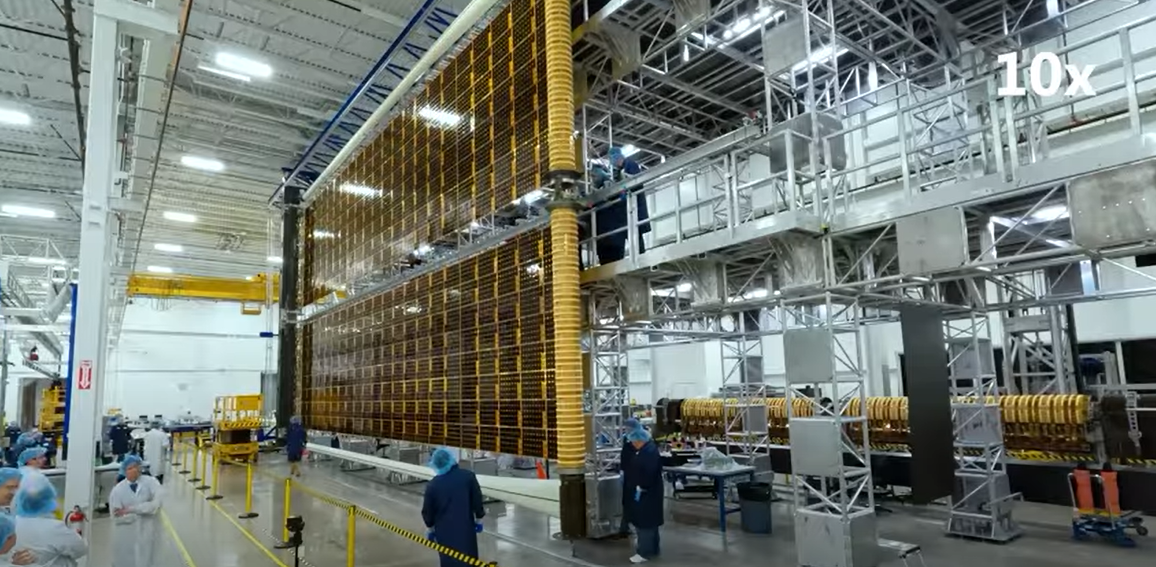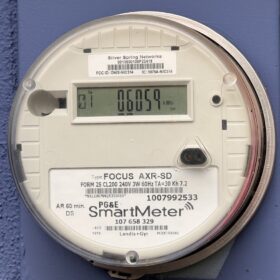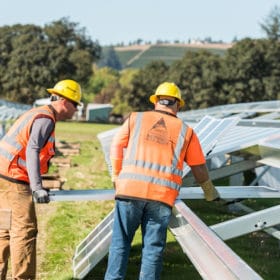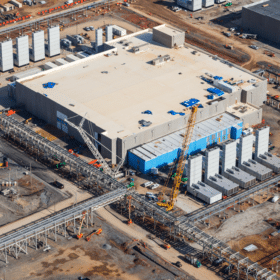Jacksonville, Florida-based Redwire Corporation announced it successfully completed the first deployment test of its roll-out solar arrays (ROSA) for the lunar Gateway space station.
Redwire said the 60 kW ROSAs are its most powerful yet. The arrays are engineered to power solar electric propulsion systems for Gateway, a small space station that will be the first station in lunar orbit. The NASA-led mission is expected to launch in 2027 at the earliest. The multi-purpose space station will support lunar surface missions, science in lunar orbit, and human exploration further into the cosmos, including missions to Mars.
“These ROSAs represent a significant technology achievement that will propel human spaceflight into a bold future,” said Adam Biskner, Redwire president of Space Systems.
The company was contracted by Maxar, designer of the station’s power and propulsion element, to develop two ROSA wings for the craft. Redwire is expected to deliver the roll-out solar wings to Maxar in the fourth quarter of 2025.
Redwire said the typical stowed power density of its ROSA is 40 kW per cubic meter, and its power-to-mass ratio is 100 W to 120 W per kg. Find a spec sheet here.
The ROSA’s composite booms utilize strain energy to produce the force required for roll-out deployment, meaning no motors or complex mechanism are required to deploy the wings, said Redwire. The booms transform into the array’s primary structure, creating stiffness upon deployment.
Leaders from Maxar, Northrop Grumman, the European Space Agency, the Consulate General of Canada, the Japan Aerospace Exploration Agency, and the United Arab Emirates’ Mohammed Bin Rashid Space Centre (MBRSC), participated in the solar array unveiling event. Watch a video of their remarks here.
“The unprecedented global coalition supporting Gateway is providing more than 60% of its funding, creating a massive savings for the American taxpayer. Moreover, gaining experience with a large spacecraft supporting surface operations will create invaluable experience to ensure that a future mission to Mars is safe and successful,” said Mike Gold president of Civil and International Space, Redwire.
The Sun is the largest power source in space, producing more power each second than humanity has consumed in the past 70 years, said NASA. Most spacecraft use solar panels to harness the Sun’s continuous energy and provide power for various needs such as thermal and payload operations.
This content is protected by copyright and may not be reused. If you want to cooperate with us and would like to reuse some of our content, please contact: editors@pv-magazine.com.









By submitting this form you agree to pv magazine using your data for the purposes of publishing your comment.
Your personal data will only be disclosed or otherwise transmitted to third parties for the purposes of spam filtering or if this is necessary for technical maintenance of the website. Any other transfer to third parties will not take place unless this is justified on the basis of applicable data protection regulations or if pv magazine is legally obliged to do so.
You may revoke this consent at any time with effect for the future, in which case your personal data will be deleted immediately. Otherwise, your data will be deleted if pv magazine has processed your request or the purpose of data storage is fulfilled.
Further information on data privacy can be found in our Data Protection Policy.